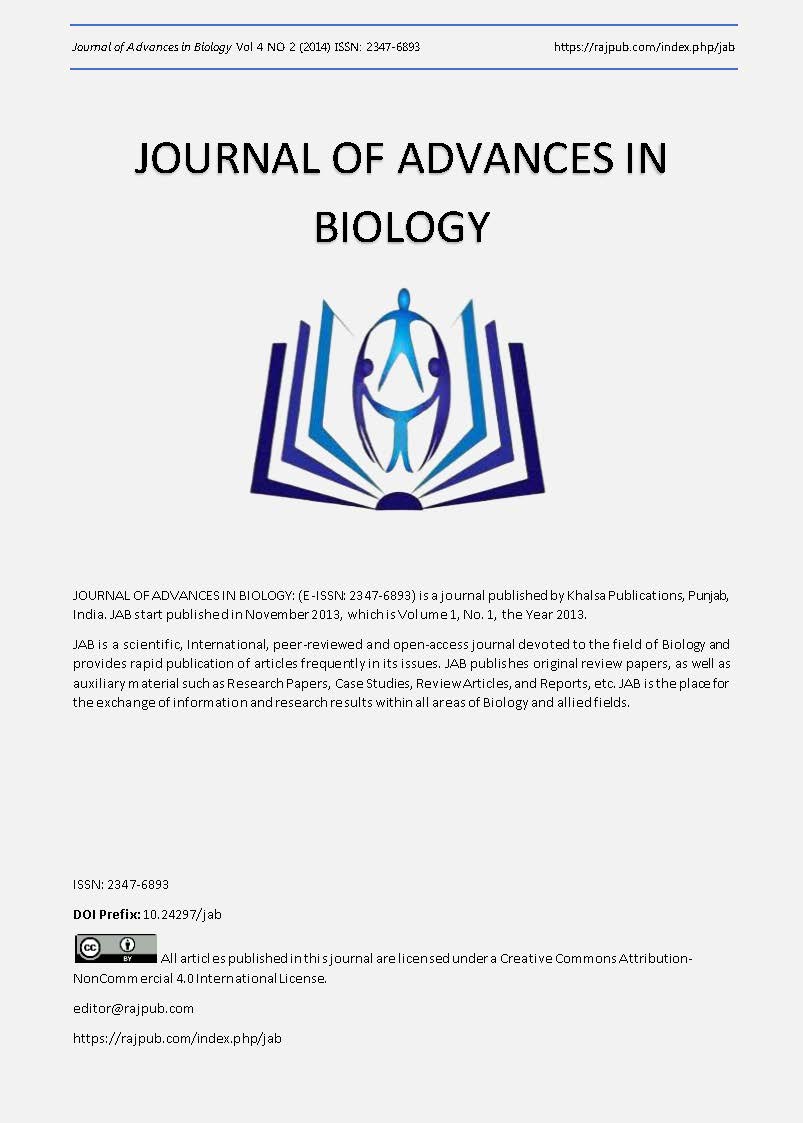In Vitro Activities of Essential Oils and fractions of Two Cameroonian Plants against Tomato Wilt Fusarium oxysporium lycopersici.
DOI:
https://doi.org/10.24297/jab.v4i2.5582Keywords:
essential oils, Tephrosia Vogelli, Callistemon citrinus, Fusarium oxysporium lycopersici, tomato, column chromatography.Abstract
In this study we surveyed the effectiveness, Minimum inhibitory concentration (MIC) and Minimum fungicide concentration (MFC) of essential oils from two medicinal plant Callistemon citrinus and Tephrosia. vogelli on mycelial growth of tomato pathogenic fungi Fusarium oxysporium lycopersici. Oils were extracted using a Clevenger apparatus and fractions with column chromatography combine to thin layer chromatography. The rates of inhibition growth were measured after placing active mycelial plugs of the fungi on Petri dishes containing PDA amended with specific concentrations of crude essential oils or fractions from each plant at 37ºC for 7 days. Data were analyzed using MSTATC and SAS (version 9.1.3) software. Essential oils extractions were effective with yield rate of 0.4 and 0.7 for Tephrosia. Vogelli and Callistemon citrinus respectively. These essential oils inhibited our fungi with growth inhibition average of 100% at 1µl/ml and 6µl/ml concentration for Tephrosia. Vogelli and Callistemon citrinus respectively. Fractionation of these oils gives 10 and 8 fractions for Tephrosia. Vogelli and Callistemon citrinus respectively. From the 8 fractions obtain with Callistemon citrinus oil, 3 totally inhibit fungi growth at 4 and 5 µl/ml concentration respectively, while from the 10 obtain with Tephrosia. Vogelli oils, 3 also shown total inhibition of the fungi growth at 0.5 and 0.8 µl/ml concentration respectively. At 2µl/ml, crude oils and fractions 2, 3 and 4 of Callistemon citrinus, were more active than the synthetic antifungi Callomil and less than Manebra, however fraction 4 and 5 of Tephrosia Vogelli were as active as Manebra and less active than callomil. Subculture analysis shown that fraction 4 of Callistemon citrinus, fraction 4, 5 and crude oil extract of Tephrosia Vogelli plant exhibit fungicidal properties while the rest exhibit fungi static properties. Since growth inhibition of studied essential oils and fractions was evident in this study, they have potential to control plant disease due to Fusarium oxysporum lycopersici and could be considered for developing new fungicides.
Downloads
Downloads
Published
How to Cite
Issue
Section
License
 All articles published in Journal of Advances in Linguistics are licensed under a Creative Commons Attribution 4.0 International License.
All articles published in Journal of Advances in Linguistics are licensed under a Creative Commons Attribution 4.0 International License.




